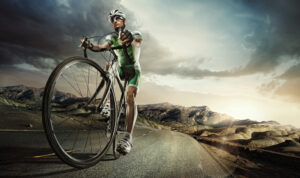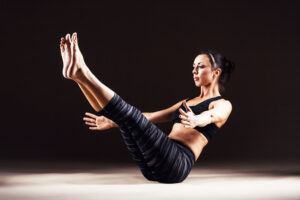
As the UK cyclists continue to dominate at the Rio 2016 Olympics, some of the team have taken a few minutes to share their thoughts on becoming a competitive cyclist. Before hearing from the Olympians, it is worth considering just how many different forms of cycling are available to us – whether we are an aspiring Laura Trott or Jason Kenny, or simply want to get out and about on two wheels.
When you start out as a cyclist, you will discover many different forms of competition – road, mountain biking, BMX, endurance, sprints or sportives. The choice is down to you. British Cycling runs a multitude of courses, competitions and clubs which will suit any rider of any ability, just check out the website to discover what opportunities are available.
What type of cyclist are you?
Geraint Thomas, who competed in the Men’s road race and the Men’s time trial, says: “Some people are born sprinters and some are born endurance riders, and you just have to find out what suits you best. The secret to endurance is having the will to stick it out, because it can get a bit mind-numbing at times. You also have to be able to put up with the strain and the stress of being on the bike for such long periods.”
Laura Trott won two golds in London 2012 and already has a third from Rio, with the chance of a fourth gold in the Omnium. She explains how she manages her effort levels to ensure there is fuel in the tank for a grandstand finish. “If you go out easier and you are still travelling at that speed a few miles later it will feel hard to maintain but is doable. If you go out hard then you will definitely slow down when the effort catches up on you because of the lactate in your legs.
An easy start pays dividends later
“On the track, the biggest mistake in timed events is going out too hard. In a 3km pursuit for instance, the first few laps should feel easy, but it’s hard to get your head around this to begin with.
“For a 4km pursuit I’d go out at a pace that I thought I could maintain for 3km and try to hang on for the last 1km. This would be pretty flat out. A 50km road race would be different as you would be able to use other riders. I would go out at a medium pace and slipstream other riders if it was quicker than I thought I could manage for the whole race. You could also make small efforts when you’re in the pack.
“For a 100-mile sportive I would start very steady. If I felt good during the ride I would lift the pace nearer the end, but I’d get to the point where I knew I would complete it first before trying too hard and blowing.”
Getting it right in the gym
When it comes to training, different cycling disciplines calls for different training methods. Bradley Wiggins, who is now Britain’s most decorated Olympian, says: “Unlike straight sprinters like Chris Hoy, I need endurance over power, so I focus on using my body weight to avoid bulking. Even 1kg of extra muscle can add precious seconds to your time. In the gym you should focus on strengthening your core for 30 minutes each day, mixing up Pilates and yoga moves and using exercise balls. Cyclists need to focus on working muscles at their extremes, under tension, for as long as possible. Without a solid core you can’t transfer power efficiently, and you’ll be left with dust in your eyes, however strong your legs are.”

Jo Rowsell-Shand, like Trott, has gold medals from both London 2012 and Rio 2016. She has this advice to combat fatigue. “Like most people who regularly train, I find it difficult to get myself out the door when I’m feeling tired from previous sessions, but here’s how I try to motivate myself.
Cyclists need to mix it up
“Having a variety of indoor sessions is always a good idea, especially if it’s raining or icy on the roads. If you’re out in bad weather, try to change a session round so you’re not exposed for too long: a one-hour ride with four or five hard efforts instead of a two-hour ride.
“Riding different routes helps cyclists getting bored on the road. Some days it could be a flat route and on others a hilly session. Turbo sessions tend to be much shorter but generally have more focused efforts, perhaps an hour with four 10-minute brisk efforts. I’ll also do gym work and stretches to mix it up.”
Much of the British cycling team’s preparation takes place in the gym, ask the staff at Kelsey Kerridge for advice on how to make the most of your training to reach your cycling potential.







